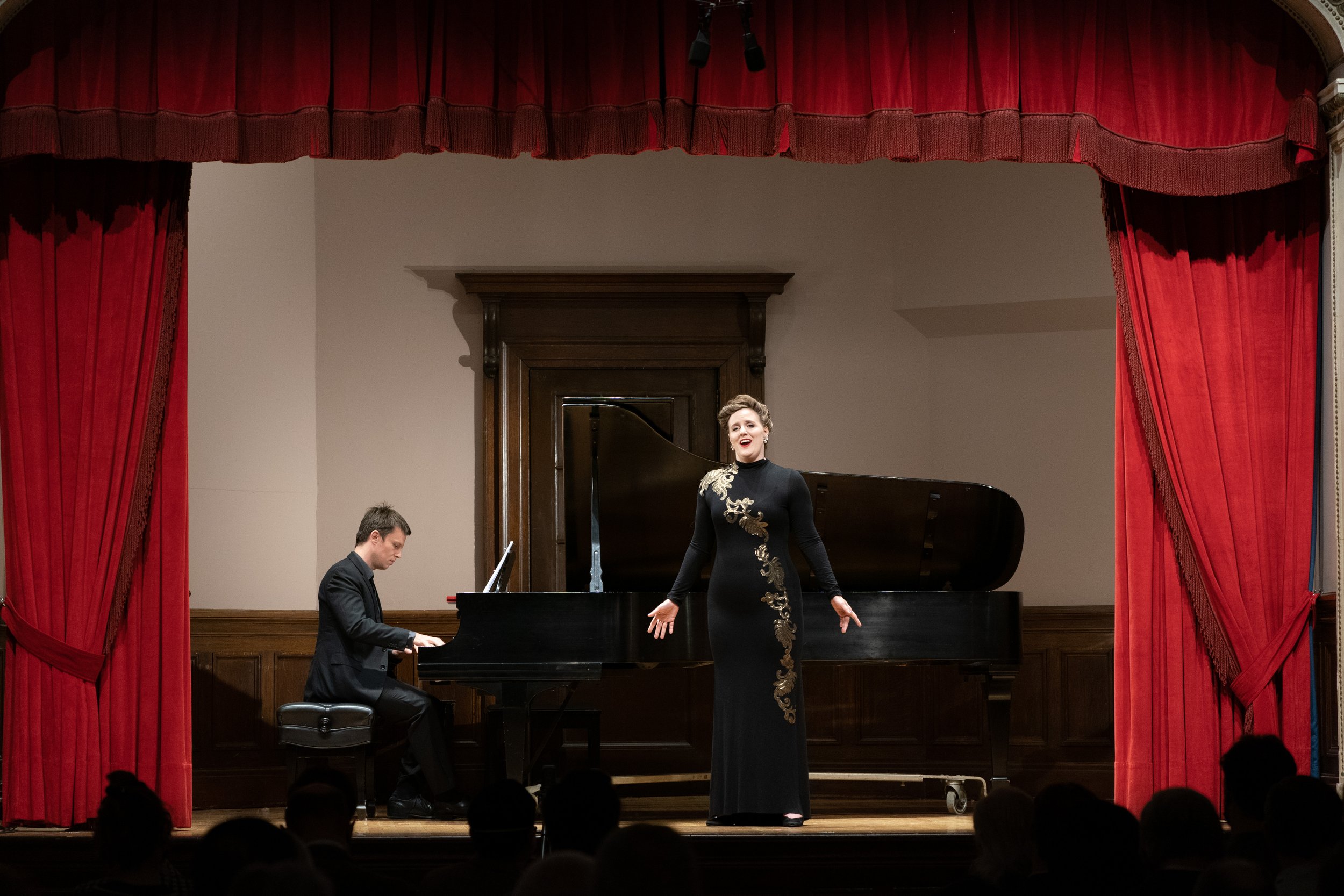Alma Mahler: MUSE OR MONSTER?
May 18, 2022 | Italian Academy
Rebecca Ringle Kamarei mezzo-soprano
Bryan Wagorn piano
Brook Speltz cello
Adam Barnett-Hart violin
Adam Golka piano
Illustrated talk by Nicholas Chong
Program
Songs by Alma and Gustav Mahler
Zemlinsky Three Pieces for cello and piano
Korngold Piano Trio, Op. 1
Photographs by Alex Fedorov © 2022
It was the litany of lovers and husbands in what he described as ‘the juiciest, spiciest, raciest obituary that it has ever been my pleasure to read,’ that inspired Tom Lehrer’s famous song about Alma Mahler, whose lyrics include the lines ‘Her lovers were many and varied, from the day she began her beguine. There were three famous ones whom she married, and God knows how many between.’ Alma Schindler Mahler Gropius Werfel was not one of those celebrated beauties who retained her allure into old age. Color film footage of her from the 1950s presents a raddled and formidable matron. In photographs taken of her in her prime, we can admire her flawless profile and magnificent bosom. Were these features enough to fascinate a small army of gifted men? In an evening of chamber music and songs, including some by the lady herself, we shall explore the enigma of Alma Mahler and the impact she had on the culture and music of her time.













